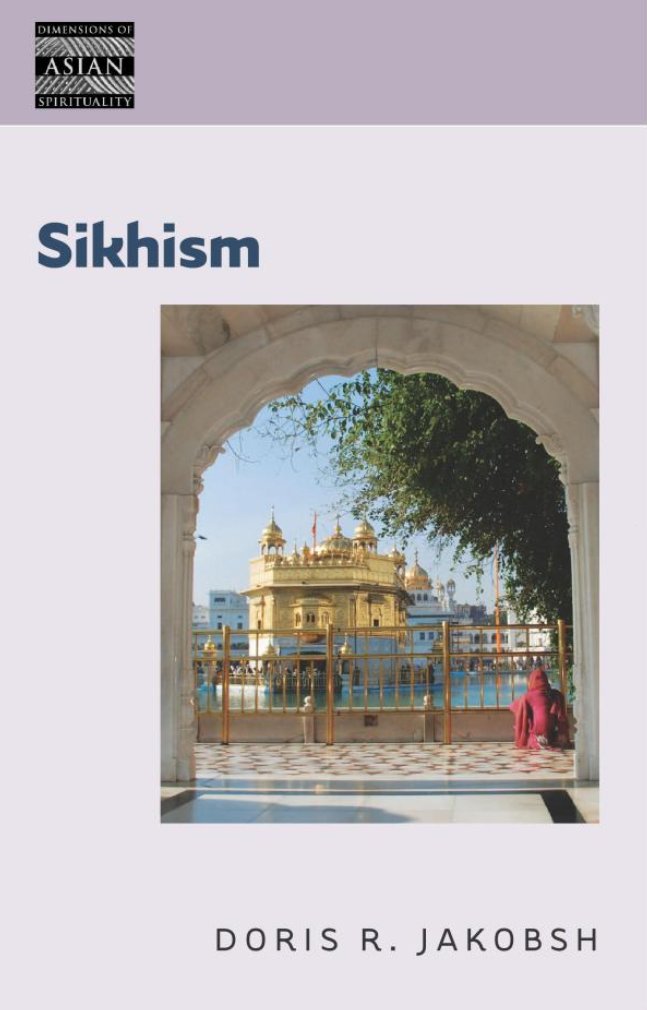 Doris R Jakobsh: Sikhism,
Doris R Jakobsh: Sikhism,
University of Hawaii Press, 2011
Paperback - $17.00 ISBN: 978-0-8248-3601-6
Review By Jagpal S Tiwana
University of Hawaii Press has started publishing a series, 'Dimensions of Asian Spirituality. The Books are written by distinguished scholars in the field. Dr. Doris Jakobsh was chosen to write the text on Sikhism. She is an associate professor in the Department of Religious Studies at the University of Waterloo, and teaching of Sikhism is one of her responsibilities. She has already given us, "Relocating Gender in Sikh History: Transformation , Meaning and Identity (2003)". Her new book 'Sikhism' is an excellent addition to her publishing history.
“Sikhism” is a comprehensive viewpoint of the Sikh scriptures, traditions, history, festivals, homeland, and the Sikh Diaspora. It looks into different sects of Sikhism and explains various terms in a meaningful manner. The striking feature of the book is the author’s expression and the precise manner in which the essence of Sikhism is captured and portrayed.
Guru Granth Sahib :
The way she describes Guru Granth Sahib is superb, "They (Sikhs) view their scripture as much more than a book; it is the abode of the Gurus, the repository of the words of Akal Purkh (Eternal Being) transcribed by their Sikh masters. It is the Divine in material form. As such the text is understood as the eternal and living guru of the Sikhs".
Succession Ceremony :
The succession ceremony of Gurus starts with Guru Nanak when he installed Bhai Lehna as the next Guru by placing five coins and a coconut before him. It ends with Guru Gobind Singh who did the same to Guru Granth Sahib at Nander in 1708. Five coins according to Jakobsh signify five elements, fire, water, earth, air and ether and the coconut represents the created earth.
Turning point in Sikh history:
The martyrdom of Guru Arjan was a turning point in Sikh history. Guru Hargobind founded Akal Takhat just opposite to Harimander Sahib where he held his court. He wore two swords of Miri and Piri. "The woolen rosary worn by previous Gurus was now replaced with a sword belt."
Development of the community:
The institutionalization of the community included a more complex role of the Guru. The Guru became a spiritual and a physical authority. Some of the key features that separated the community from the wider society were the collation of orally transmitted hymns into a scriptural text, the establishment of the sacred sites of pilgrimage and the dispatch of missionaries proclaiming the message of the gurus...Guru Gobind Sigh's creation of the Khalsa order was also an attempt to unify an increasingly splintered community. Those bearing the signs of the Khalsa brotherhood made it clear to all they were the true devotees of the one and only true guru.
Minor changes or modifications in the practice of Sikhism have not escaped her notice. Though Lohri celebrations focus on the births of sons, yet the birth of a girl is also being included in the celebrations in recent years in some families. In the wedding ceremonies on rare occasions, the bride has started taking lead while bridegroom follows her in the lavan ceremony.
Since feminism is her forte, Jakobsh highlights some cultural discriminations against women. Female infanticide though condemned by Sikh Gurus, is still practiced. Sikh women are debarred from doing kirtan at Darbar Sahib, though Guru Nanak treated women as equal to men. "Sikh women", remarks Jakobsh, "take solace from the doctrinal support they claim from various sources, including scripture."
Jakobsh is not so accurate about the karva chowth ritual. Only Hindu women keep fast for the health of their husbands. This, however, is not a practice in Sikh families as she understood.
The Chapter on Diaspora is informative. The author is up-to-date on all Diaspora issues such as Sikh immigration to UK, Canada and USA, turbaned vs non-turbaned controversy in Gurdwaras resulting in fights and litigations, the aftermath of 1984 and 9/11 developments, establishment of chairs in Sikh studies, the popularity of the Bhangra beat and the full use of Internet by the younger generations to understand and popularize Sikh faith
As Sikh historian Dr. Hew McLeod observed, you cannot write the history of a community without being sympathetic to it. There is ample evidence of that in Jakobsh's book. "Visitors to Punjab are often amazed at the warmth and openness of its people ... Historically Sikhs have shown remarkable resourcefulness in adapting to ever changing religious, political and economic pressures both in homeland and as migrants in distant lands. The future of Sikhism though faced with obvious challenges, appears bright. Its innate adaptability will ensure the Sikh community continues to develop and thrive" concludes Jakobsh.
This volume is an excellent introduction of Sikhism to Sikhs and non-Sikhs. Among the list of sources the author has consulted are not only the works of prominent scholars of Sikhism, but also the important Sikh web sites on Internet.
Jakobsh’s ‘Sikhism’ deserves a place in all academic, public, private and Gurdwara libraries along with the same titled books by other academicians.
